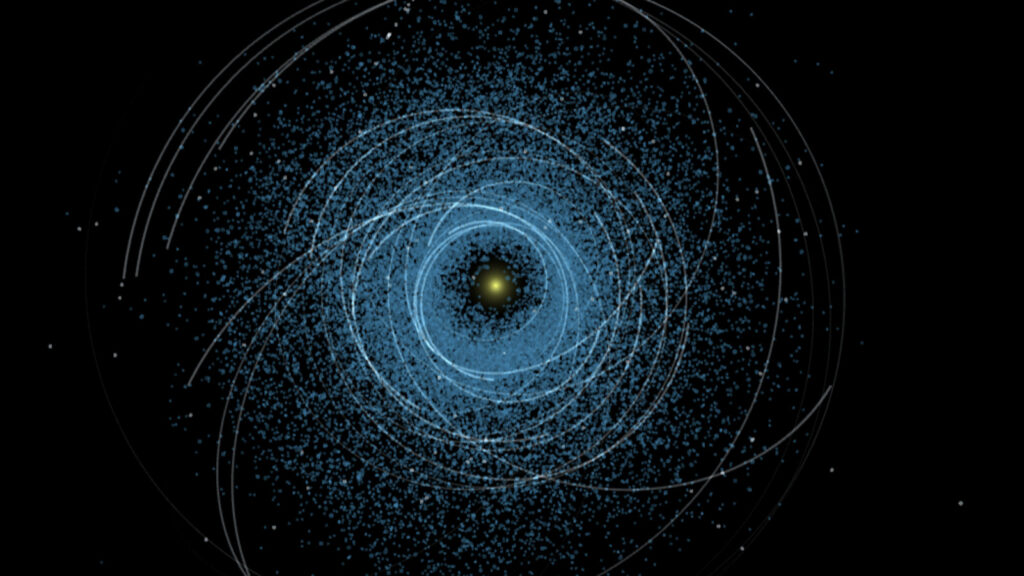
World Asteroid Day 2025 is here, offering a unique opportunity to witness near-Earth asteroids in real-time from the comfort of your home. On June 30, enthusiasts can tune into a special livestream event that brings the wonders of space directly to their screens.
This year marks the 10th anniversary of World Asteroid Day, a United Nations-backed initiative aimed at increasing awareness about asteroids, their scientific significance, and the measures humanity is taking to mitigate potential risks. The date is symbolic, commemorating the 1908 Tunguska event, where a massive meteor explosion in Siberia flattened millions of trees and ignited widespread forest fires.
Virtual Telescope Program’s Special Livestream
The Virtual Telescope Program has announced a captivating livestream to celebrate World Asteroid Day. Scheduled to begin at 5 p.m. EDT (2100 GMT) on June 30, the event will be hosted on the Virtual Telescope Project’s YouTube channel, offering free access to real-time views of near-Earth asteroids. This broadcast will not only showcase these celestial bodies but also delve into their characteristics and the potential impact risks they pose.
Earth’s history is marked by numerous asteroid impacts, with the Chicxulub impactor being one of the most significant, leading to the extinction of countless species and altering the course of evolution. However, such catastrophic events are rare. According to NASA’s Center for Near Earth Object Studies, of the over 30,000 near-Earth objects tracked so far, none are expected to pose a significant threat to our planet in the next century.
Global Efforts in Planetary Defense
While asteroid defense might once have seemed like science fiction, recent decades have witnessed substantial progress in preparing for potential collisions. The annual Planetary Defense Conference, attended by NASA, ESA, and other global partners, focuses on strategies to prevent and respond to hypothetical asteroid impacts. These exercises have highlighted challenges such as the speed of mission deployment and effective public communication.
Beyond simulations, real-world initiatives have also taken shape. In September 2022, NASA’s Double Asteroid Redirection Test (DART) made history by successfully impacting the moonlet Dimorphos, part of the Didymos binary system. This mission demonstrated that a kinetic impact could alter the trajectory of a small solar system body, providing a viable strategy for planetary defense. The European Space Agency’s Hera mission is set to visit the Didymos system in December 2026 to study the aftermath of the DART impact.
The Role of Advanced Telescopes
Meanwhile, astronomers continue to scan the skies for potentially hazardous near-Earth objects. The Vera Rubin Observatory, with its powerful telescopic capabilities, is set to significantly enhance these efforts. Located atop Cerro Pachón in Chile, the observatory’s primary mission is to explore dark energy and dark matter. However, its initial observations have already underscored its potential as an asteroid hunter.
In just a few nights, the Rubin Observatory identified 2,104 new near-Earth objects. Experts predict it could discover up to five million more in the coming years.
“This is five times more than all the astronomers in the world discovered during the last 200 years since the discovery of the first asteroid,”
said Željko Ivezić, Deputy Director of Rubin’s Legacy Survey of Space and Time, during a press conference unveiling the observatory’s first images on June 23.
Looking Ahead: The Future of Asteroid Detection and Defense
The advancements in asteroid detection and defense underscore the importance of continued international collaboration and technological innovation. As the world observes World Asteroid Day, the focus remains on understanding these celestial neighbors and ensuring Earth’s safety from potential threats.
With initiatives like the Virtual Telescope Program’s livestream and ongoing scientific endeavors, the public gains valuable insights into the dynamic and ever-evolving field of asteroid research. As we look to the future, the commitment to planetary defense remains a testament to humanity’s ingenuity and resilience in the face of cosmic challenges.







